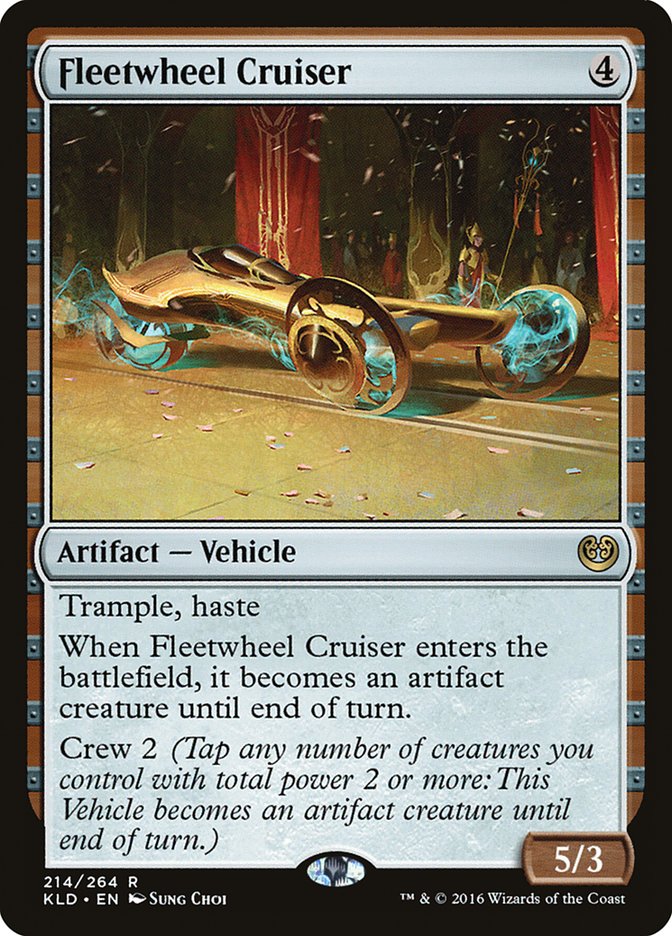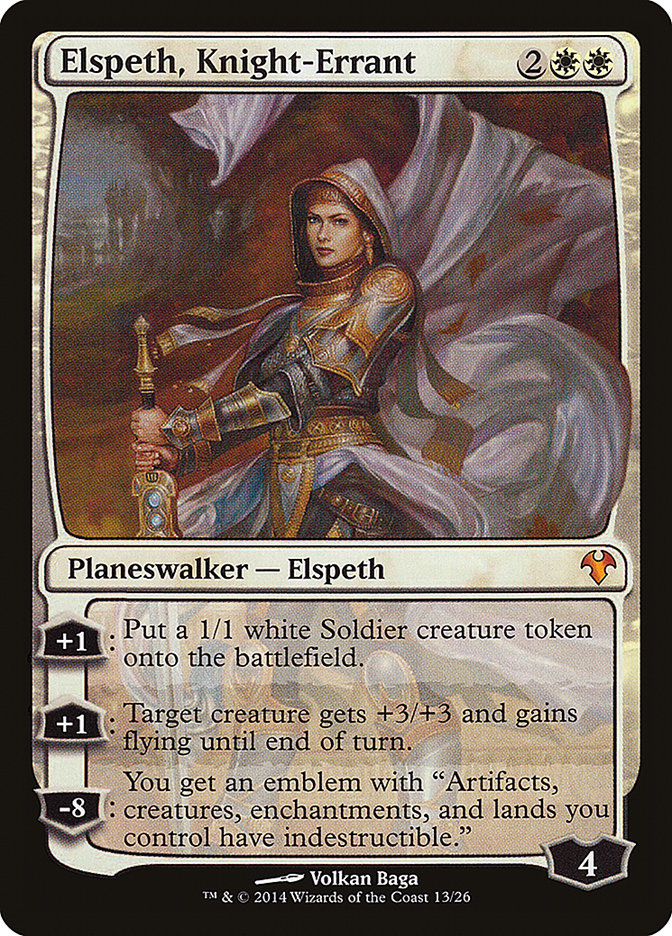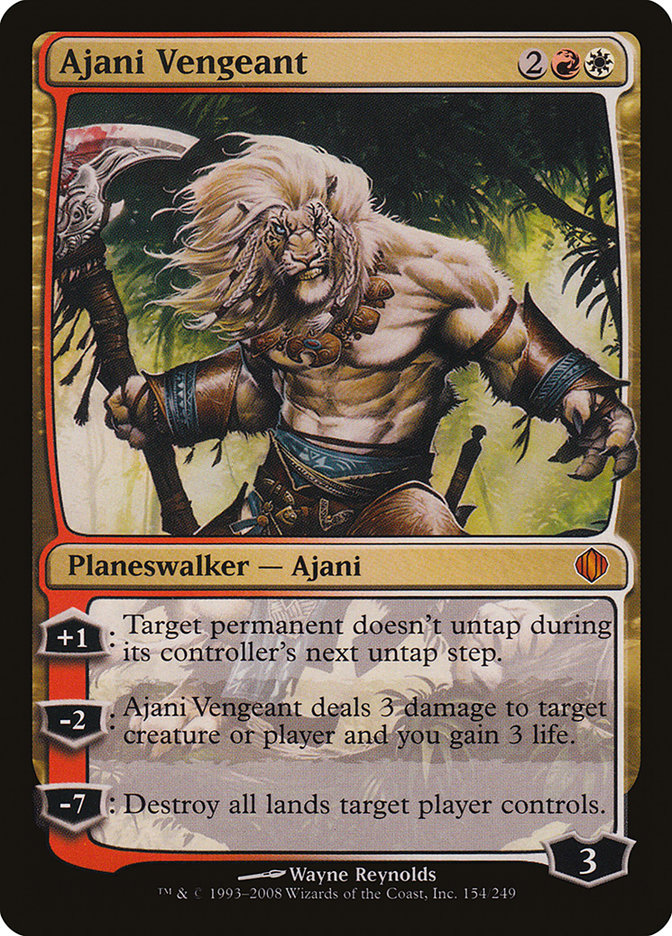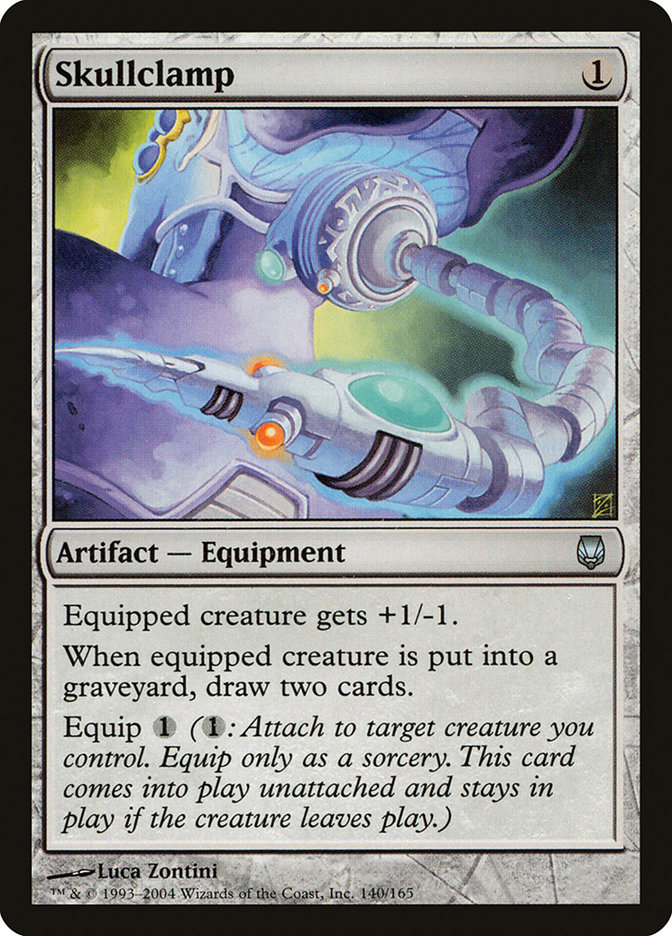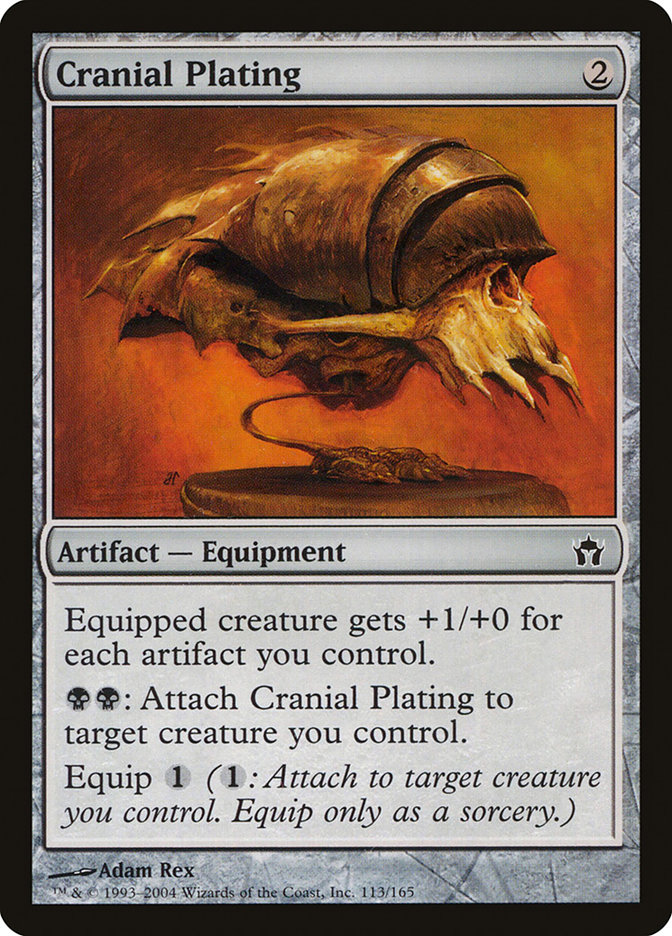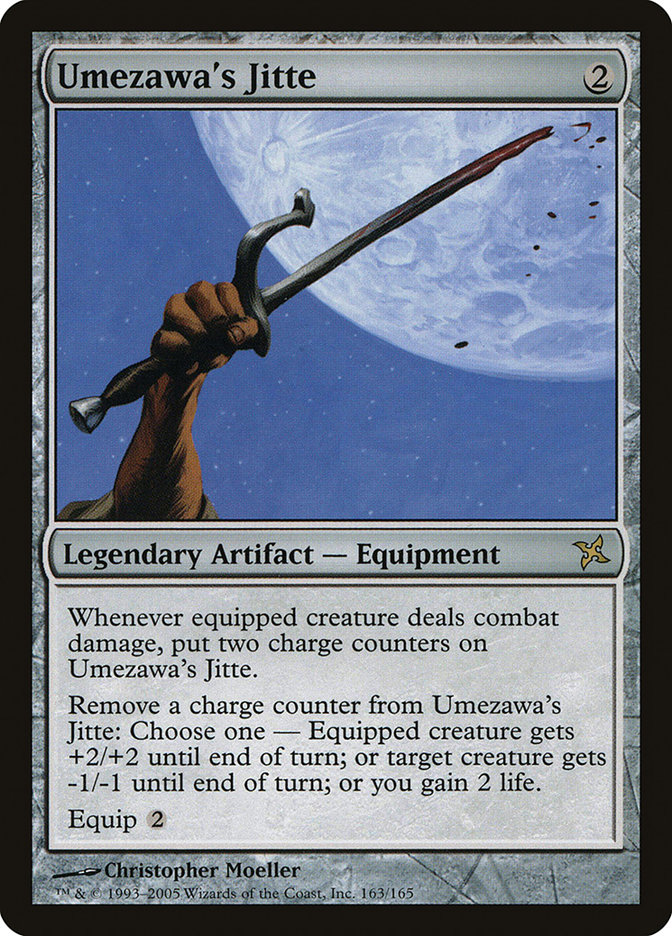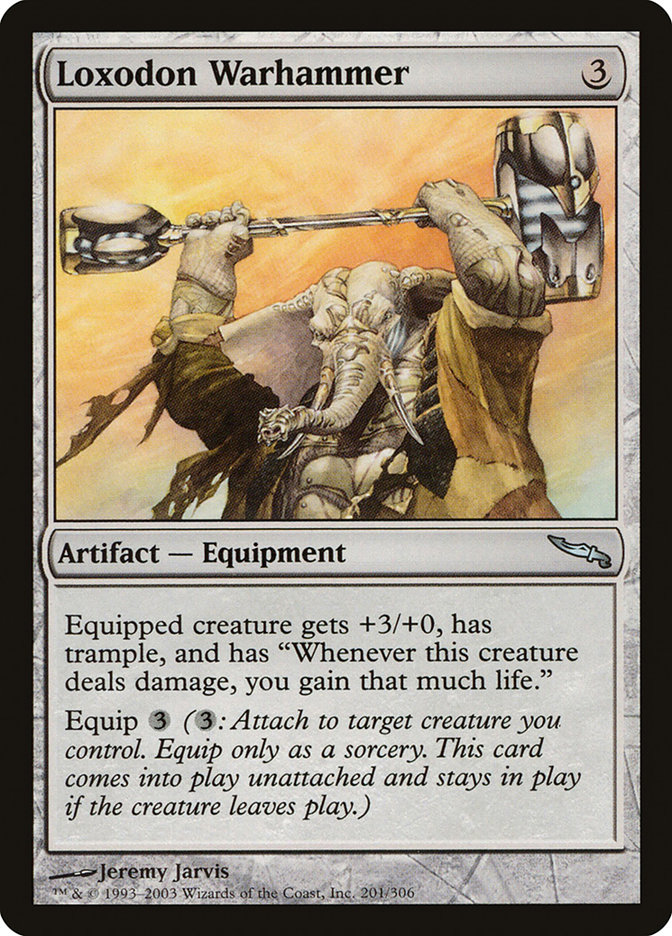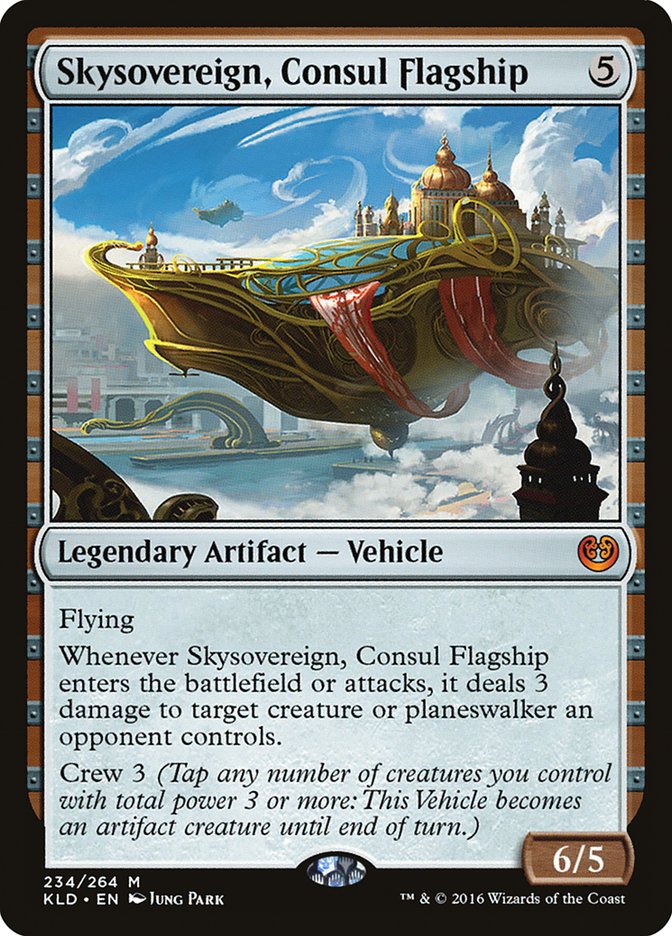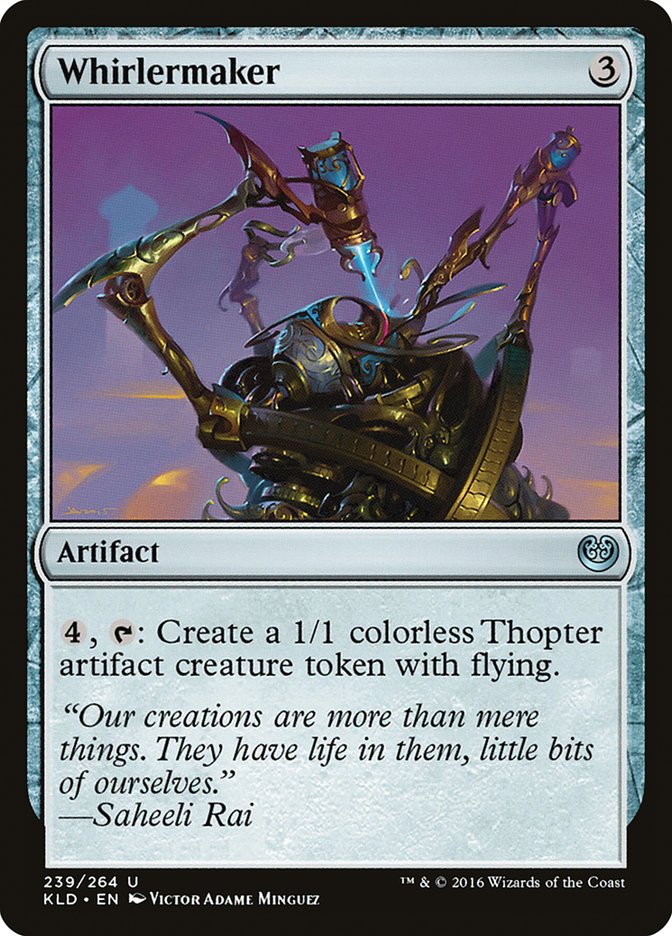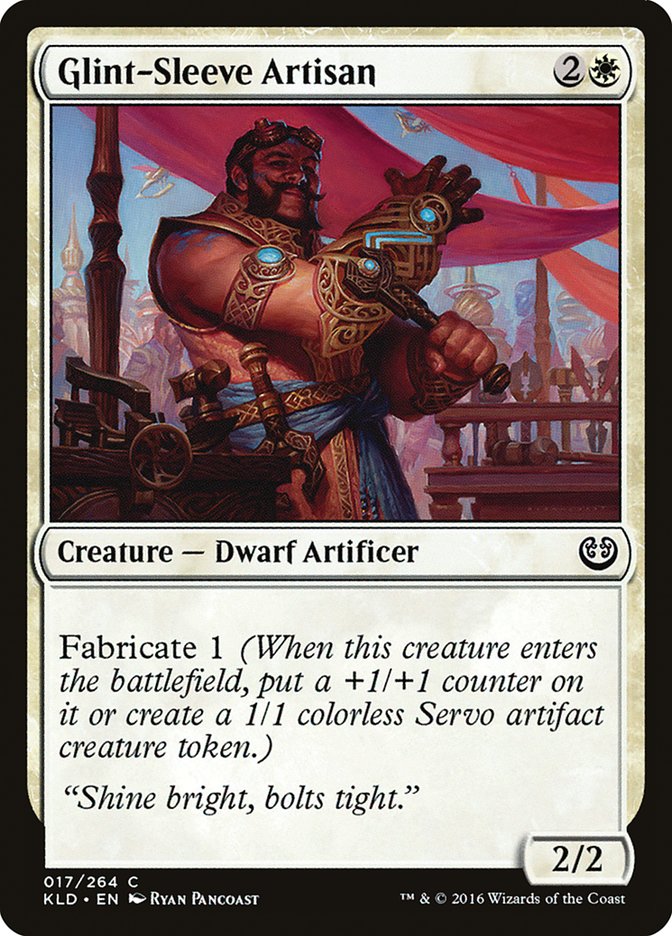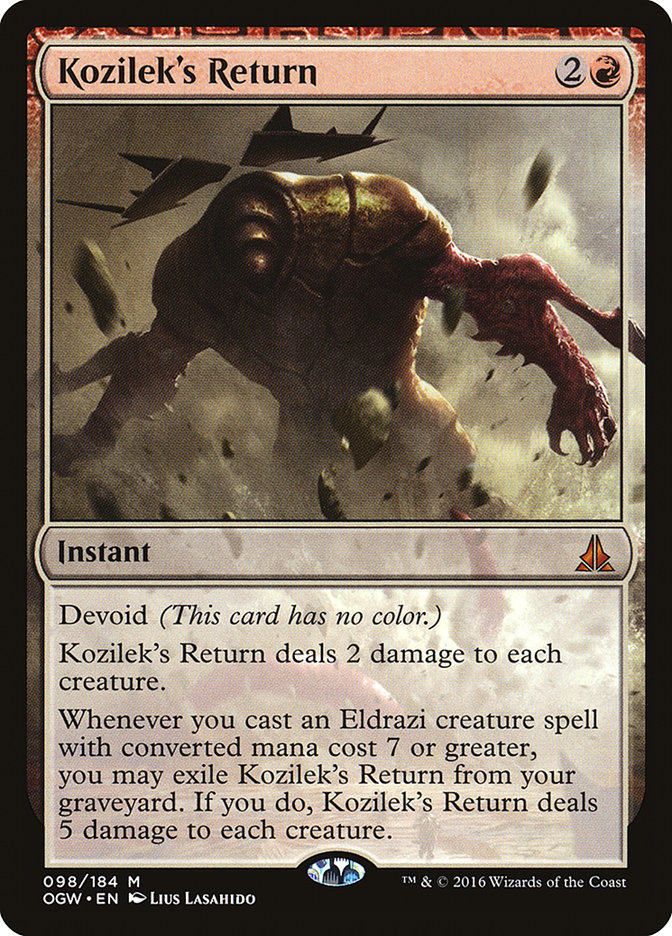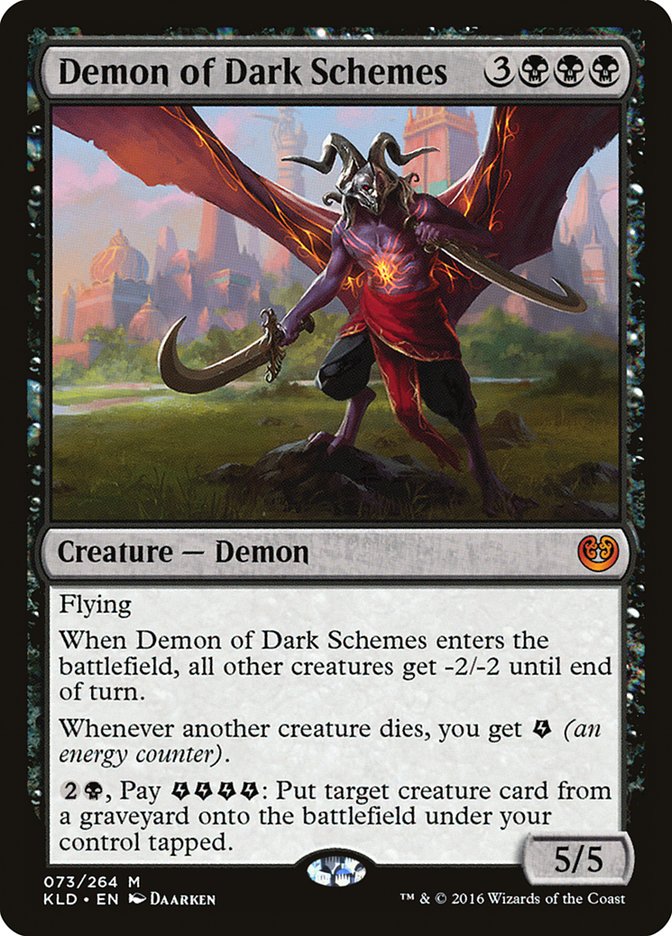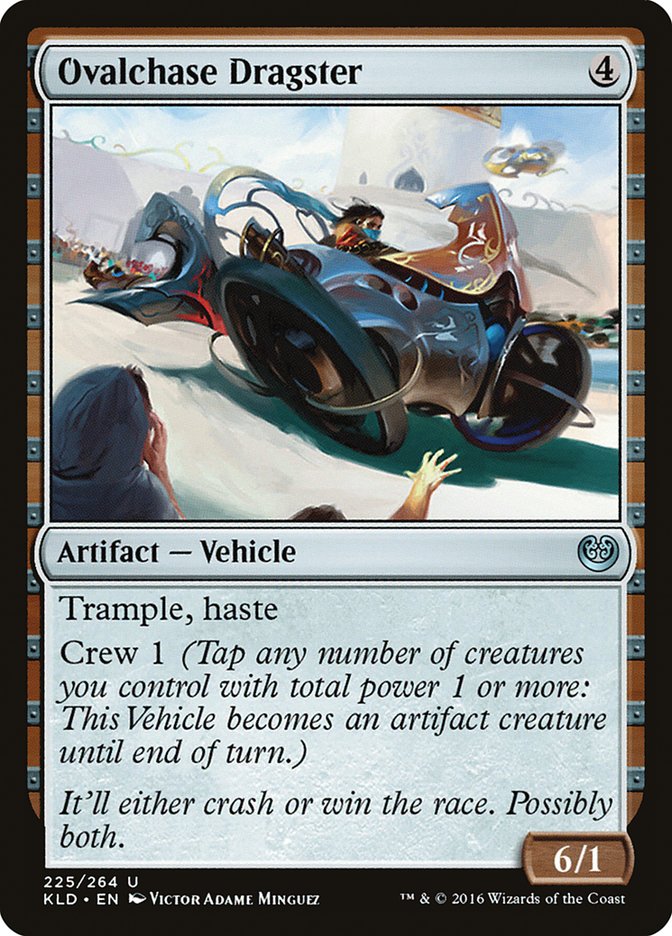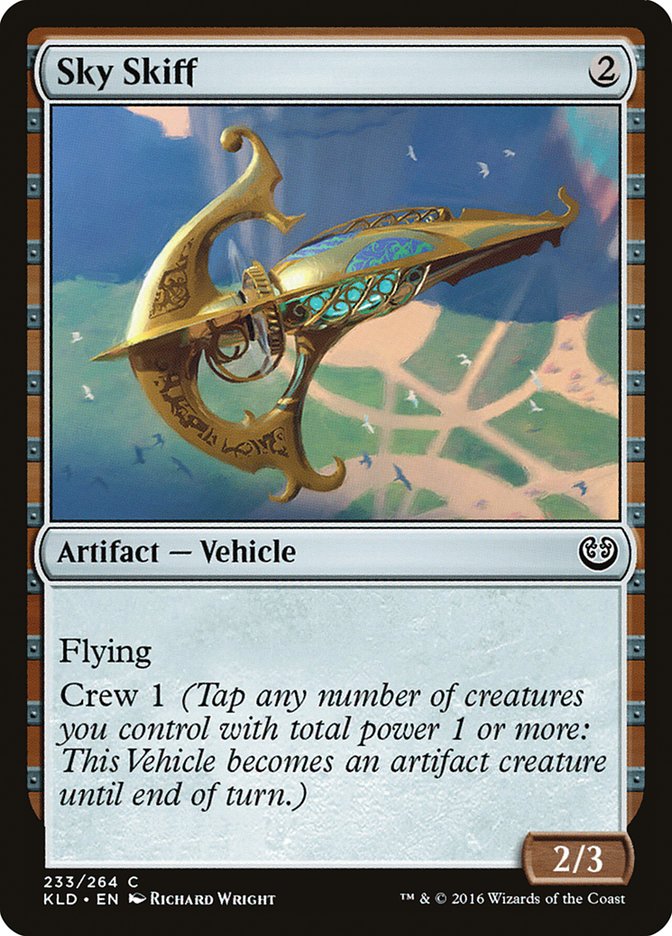Standard is officially a lame duck. Last week saw #SCGRICH and #MTGChamp see out Dragons of Tarkir and Magic Origins in the most fitting and predictable way possible, with Collected Company taking both trophies. And with that final laurel, we can now start looking forward to a format where you don’t get Reflector Maged three times a game.
Of course, we can also start looking forward to what Kaladesh will bring to the format, since spoiler season officially started at PAX West, the site for this year’s World Championship.
My first impression? These early spoilers show Kaladesh to be, from a design perspective, one of the most ambitious sets in recent memory. The fall set will introduce two mechanics that add a completely different dimension to the game.
Energy is a brand-new resource to manage which works slightly different from mana as it does not go away at the end of the step. How that will compare with our classic mana and interact with it is unclear and will certainly take some time to evaluate.
And then we have a new card type: Vehicles. These are artifact creatures that lay dormant until you designate a crew to pilot it by tapping a number of creatures with total power at least equal to its crew cost.
Both of these mechanics are a mystery because they are so different from what has come before, and looking back over Magic’s history, the introduction of such new mechanics ratchets up the potential for power level mistakes.
Early pushed planeswalkers like Elspeth, Knight Errant; Ajani Vengeant; and of course Jace, the Mind Sculptor were dominant in their times in Standard, and in the case of Jace, in older formats as well. Planeswalkers also completely changed the game by necessitating that creatures become more aggressively costed as the best means to combat them. If you’re looking for the point where the balance in power in Magic shifted away from dominant spells and toward aggressive creatures, look no further than Lorwyn and planeswalkers.
We can also look back on the introduction of Equipment back in Mirrodin block. Darksteel brought us perhaps the most broken piece of equipment of all time in Skullclamp, while Fifth Dawn gave us Cranial Plating. The very next block contained Umezawa’s Jitte. All of these cards were too powerful because it’s so hard to gauge power level for cards that are unprecedented in style. Even the block’s Limited format had a huge mistake with Loxodon Warhammer being printed at uncommon.
These new mechanics and card types are the most exciting part of their set, so cards with them absolutely need to be pushed or the set will fall flat. And so it behooves us as players to closely scrutinize these cards, since it is likely that at least some of the breakout stars of the set will come from their ranks.
Today I will be focusing on Vehicles for two reasons:
First, I think they’re sweet. The flavor is very evocative and I like how they mix up combat by creating more options for the attacking player, thus putting the defender off-balance. If you don’t like bad car puns, then you’re going to have a bad time in Kaladesh Standard, so you’d best get used to it now.
Second, I think evaluating individual Vehicles with only a fraction of the set spoiled will be much easier than with energy. We’re going to need to see most if not all of the set before we can gauge how easy it is to accumulate energy, which is essential to evaluating how prohibitive the cost on powerful effects like that of Aetherworks Marvel is. So let’s shelve that one for now and go for a nice, leisurely drive.
I’ll start by saying that I’m going to focus less on the power level of individual cards, since that requires increased context, and more on the implications of Vehicles in Standard. Their added dynamics will shift the format in predictable ways, and understanding that shift will be a key part in gaining an edge during the early weeks of Kaladesh Standard.
With that said, let’s dissect Vehicles at the surface level. Consider Skysovereign, Consul Flagship:
As I noted earlier, Vehicles are artifact cards that look like creatures but critically lack the word “creature” in their type line. When you first cast them, they sit around like an old junker on blocks in the front yard. After all, what is a car, or some sort of motorized floating palace, without a driver?
Any creature can drive, provided it has enough power. Each Vehicle comes with a crew cost which represents the minimum power needed to operate it. Of course, you can bring your friends along to check out your sweet ride, so you can tap any number of creatures to activate your Vehicle, so long as the sum total power of the group is at least equal to the Vehicle’s crew cost. In this case the cost is three, so you need a Trained Armodon to operate it. Or two Grizzly Bears. Or three Servo tokens. It all works and having the option is very nice.
Once your Vehicle has a driver/pilot/conductor, it is free to do all the things other creatures do: attack so long as it’s not summoning sick, block another creature if you activate it at instant speed, or fight something with Prey Upon. You can even use a Vehicle to activate another Vehicle, which I’m sure will produce plenty of Xzibit memes on Twitter over the next eighteen months. Skysovereign, Consul Flagship gets to bash for six in the air while throwing around lightning bolts like Zeus, so while it may take some effort to get there, the payoff is handsome.
It all seems rather simple on the surface, but I believe Vehicles will play a large role in shaping the upcoming Standard format, certainly much more than ordinary artifact creatures would. Increased ease of transport has long been critical in human history, from the Mongols using their mastery of the horse to build one of the largest empires in world history, to the automobile creating the blueprint for suburban American life, to the airplane making a global game like professional Magic: The Gathering possible. We’re obviously working on a much smaller scale (no one is going to be literally conquered here, I promise), but I expect Vehicles in Magic to generate the same lasting impact as they have in the world.
The first step in evaluating their potential impact is to look at how to most efficiently use them. The crew cost is satisfied by any collection of creatures with a minimum total power, but you don’t want to commit seven power of creatures to turn on six power unless the evasion is critical or you absolutely have to. The goal will be to meet the crew cost exactly, so you invest the fewest resources for the greatest gain.
You accomplish this goal by having a swarm of small creatures as opposed to a couple of large ones. 1/1s are especially good at activating the minimum crew power so you don’t waste any power. Spamming the battlefield with small creatures also helps to ensure that your Vehicles continue to connect, since a single spot removal spell cannot take out a huge portion of your total power. Since Vehicles are useless without a pilot, allowing your opponent to kill a creature and take you off crew will be a virtual two-for-one, which you need to avoid.
Unsurprisingly, this incentive for small creatures is perfectly served by Kaladesh with its myriad Servo and Thopter token creators. Isn’t it funny when things work out like that? The designers at Wizards of the Coast are just so darn lucky sometimes.
So obviously the set is going to support its new mechanics, but the more important question is how the influx of small creatures affects Standard. Bant Company had the format revolving around 2/3 bodies, so what happens now that we have to handle a swarm of 1/1s?
The obvious is that the front half of Kozilek’s Return gets better. We’ve mainly seen the card be used with Eldrazi for its more powerful second half, which required a lot of setup so you could get it into the graveyard. If you can reasonably cast the card for value in the early-game, that means the Emerge decks may look a bit redder in the coming months as they look to reliably cast a sweeper that they wanted to play anyway.
The second card that matches up well with small creatures, especially 1/1s, is Liliana, the Last Hope. Liliana already saw play in Eldritch Moon Standard as a key card in B/G Delirium and B/W Control. The +1 ability can effectively neutralize a 2/3, but if you turn it into a removal spell, suddenly Liliana is mowing down an entire battlefield of creatures, all the while building toward a nigh-unbeatable ultimate. Throw in the potential value of the -2 and you have a format-defining staple. Black may be losing its sweeper in Languish, but Liliana, the Last Hope may slot into that role very quickly.
Of course, capitalizing on the metagame changes from Vehicles isn’t entirely the domain of current cards. Kaladesh will have its fair share of countermeasures for its own cards, and one in particular stands out to me as more powerful than the rest: Demon of Dark Schemes.
Six mana is a steep cost, but in return you get a huge, evasive body, an effective sweeper for small creatures, and a pile of energy that you may be able to turn into a free Rise from the Grave as quickly as the next turn, provided you don’t have an even better use for it. If you also turn off your opponent’s Vehicles, that is a devastating swing that can put you from far behind into a commanding position. Simply put, it’s the kind of effect you’ll gladly spend six mana on. Be prepared for Demon of Dark Schemes and Liliana, the Last Hope to team up in black midrange/control decks.
Moving on, it’s important to note how Vehicles support aggressive decks. Obviously decks that create swarms of small creatures will want to be aggressive, but supplementing them with Vehicles creates an important shift in the dynamics of defending against these kinds of decks. Swarming aggro decks have been kept in check by the 2/3 bodies in Collected Company decks, unable to effectively get under them or attack through or around them.
Vehicles are the perfect weapon to break through these walls, like a trebuchet breaches an otherwise impregnable castle. You can use your smaller creatures to crew a Vehicle and make a sizable attack that is much more difficult to block. And if your opponent abandons their defensive measures, then your small creatures are free to attack unopposed. The mere threat of Vehicles will force the reactive player to adapt, which is difficult, since it is the attacking player who has the option. Giving yourself more options is subtly one of the best ways to gain an advantage in Magic, and Vehicles place that advantage squarely in the hands of aggressive players.
The next question, then, is how do reactive players prepare for these new, more versatile aggro decks? I noted above how sweepers are an important part of defending against the small creatures that will enable Vehicles, but if you just focus on the enabler creatures, you will leave yourself vulnerable. The driver can still operate when summoning sick, so your opponent will still be drawing to any large enough creature to hop in and drive in for sizable chunks of damage. Vehicles will effectively turn all those poor mid-game draws that your aggro opponents complain about into burn spells that you need to play around.
This means that you will want to have instant-speed spot removal, since your opponent will rarely activate their Vehicle on your turn. Cards like Murder which seem underwhelming have already seen some play as solid answers to Elder Deep-Fiend, and I expect them to play an important role in Kaladesh Standard. Of course, there will always be the risk of your opponent not activating their Vehicle in the face of your open mana, so this is not a foolproof plan, but if you can reasonably use your mana on your opponent’s turn, then you can mitigate the risk. The ultimate answers will come in the form of Shatter effects, which will no doubt be printed en masse for an artifact-themed block. Keep an eye on some of the more efficient such spells, since they will be premium sideboard material.
Having looked at their potential effects on Standard, I’d like to spend some time discussing how to properly evaluate Vehicles. Knowing exactly how high a crew cost of two is relative to three or four is nearly impossible to do before you play some games with the cards, so that will have to wait. There is, however, an easy trap to fall into when gauging the power level of these cards.
The intuitive comparison is to normal creatures, and on that metric all the Vehicles we have seen thus far are very aggressively costed: four mana for six power with haste and trample, five mana for six power with flying. Even two mana for a 2/3 flier is a great rate. But you’re sacrificing something to create that body for the turn, namely the body of any creature in its crew. Therefore, it will be more representative of what the card adds to your battlefield if you analyze its stats relative to the crew cost.
This means that Ovalchase Dragster is closer to a 5/1, Skysovereign, Consul Flagship a 3/5, and Sky Skiff a 1/3, at least against a goldfish. By this metric, Vehicles seem rather poor by normal Constructed standards, but Magic is not played against a goldfish. You have to weigh the base stats against the optionality it gives you in combat.
Like Anointer of Champions, Vehicles will make the rest of your creatures better by allowing some of them to factor into combat when they would otherwise be ineffective. So while Vehicles may not add as much power to your battlefield in theory, they ensure that you get to attack with more of that power on a consistent basis. Increasing your usable power by four is much more important than increasing your nominal power by two.
That makes them much more valuable than their adjusted stats may indicate, and the optionality they afford you makes them more complex. Vehicles are going to be successful based on how they match up against common blockers, much like most aggressive creatures, but it will be in how they match up against blockers that are poor against the creatures that are crewing them. If your opponent can reasonably cast a creature that holds back both an early swarm of creatures and the Vehicle they enable, the aggressive player is going to be in trouble. But if the Vehicle and enablers require different answers, then the reactive player is disadvantaged.
Because Vehicles are colorless, you can easily pair them with a host of other creatures in various colors, so this evaluation will be more about the best shell for a given Vehicle than its overall power level. But evaluating cards is an inherently contextual process, so the former question is much more valuable than the latter.
The one place where overall power is relevant is in cards that break their inherent limitations. In the case of Vehicles, the one card I see that does this is Fleetwheel Cruiser. Being able to get your initial attack in without meeting the crew cost can lead to some very explosive turns in aggressive decks with Fleetwheel Cruiser at the top of the curve.
It also makes Fleetwheel Cruiser an excellent topdeck from an empty battlefield, which is a weakness of other Vehicles. This card will often have the immediate impact of a normal creature while still possessing the strengths of a Vehicle in avoiding sorcery-speed removal and forcing your opponent to prepare for the mere threat of it attacking before you commit any resources to it activating it. As such, I view it as the most exciting Vehicle spoiled thus far.
There are so many other questions to be answered before we properly understand Vehicles, from how the crew cost scales to the proper balance of enabler creatures to Vehicles in a given deck. How does that balance shift when you account for your opponent’s interaction? What will the best car pun made on Twitter be?
These are all important questions to ask, and I’ve only scratched the surface of them today. Such is reality when you have a mechanic without a direct precedent, and the introduction of Vehicles as well as energy sets up Kaladesh to be even harder to evaluate than Eldritch Moon. This new set is looking to be exciting enough to make that bonfire of Collected Companies and Dromoka’s Commands you were planning look rather silly. So why don’t you put down that can of gasoline and hop in. Don’t forget to fasten your seatbelts. It‘s going to be a bumpy ride.



